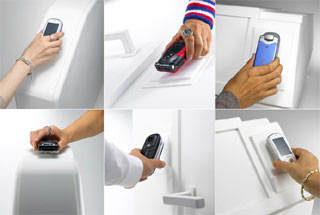2006: Japan's Year of the FeliCa eWallet Phone
 According to the ancient Chinese calendar, 2006 is The Year of the Dog. More importantly, it’s shaping up to be The Year of the eWallet. Launched last summer, DoCoMo’s FeliCa-based wallet phones are a growing success and competitors Vodafone and KDDI have scrambled to launch their own FeliCa-equipped models.
According to the ancient Chinese calendar, 2006 is The Year of the Dog. More importantly, it’s shaping up to be The Year of the eWallet. Launched last summer, DoCoMo’s FeliCa-based wallet phones are a growing success and competitors Vodafone and KDDI have scrambled to launch their own FeliCa-equipped models.
A recent survey points to wide consumer satisfaction and even the BBC have started reporting on Osaifu Keitai (wallet phones). The BBC’s ‘Click Online’ producer caught up with me last month in Tokyo; they were in town to cover CEATEC, but also wanted the tech and business-model details on DoCoMo’s ‘i-mode FeliCa‘ mobile service, as well as how people are using them. The result was a pretty good TV programme (if I may say so myself), which you can watch on the Click Online site(WWJ subscribers log in for full story).

